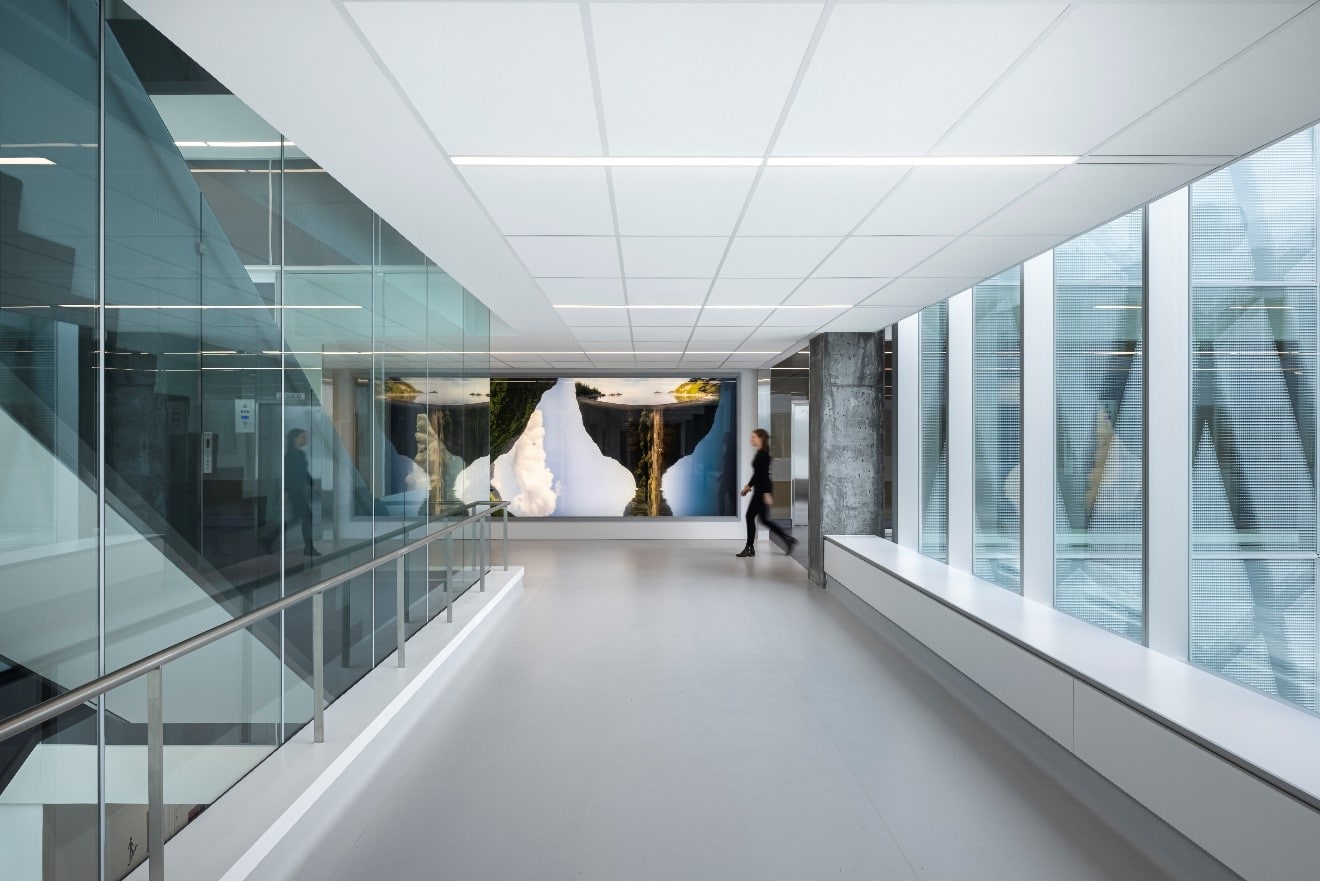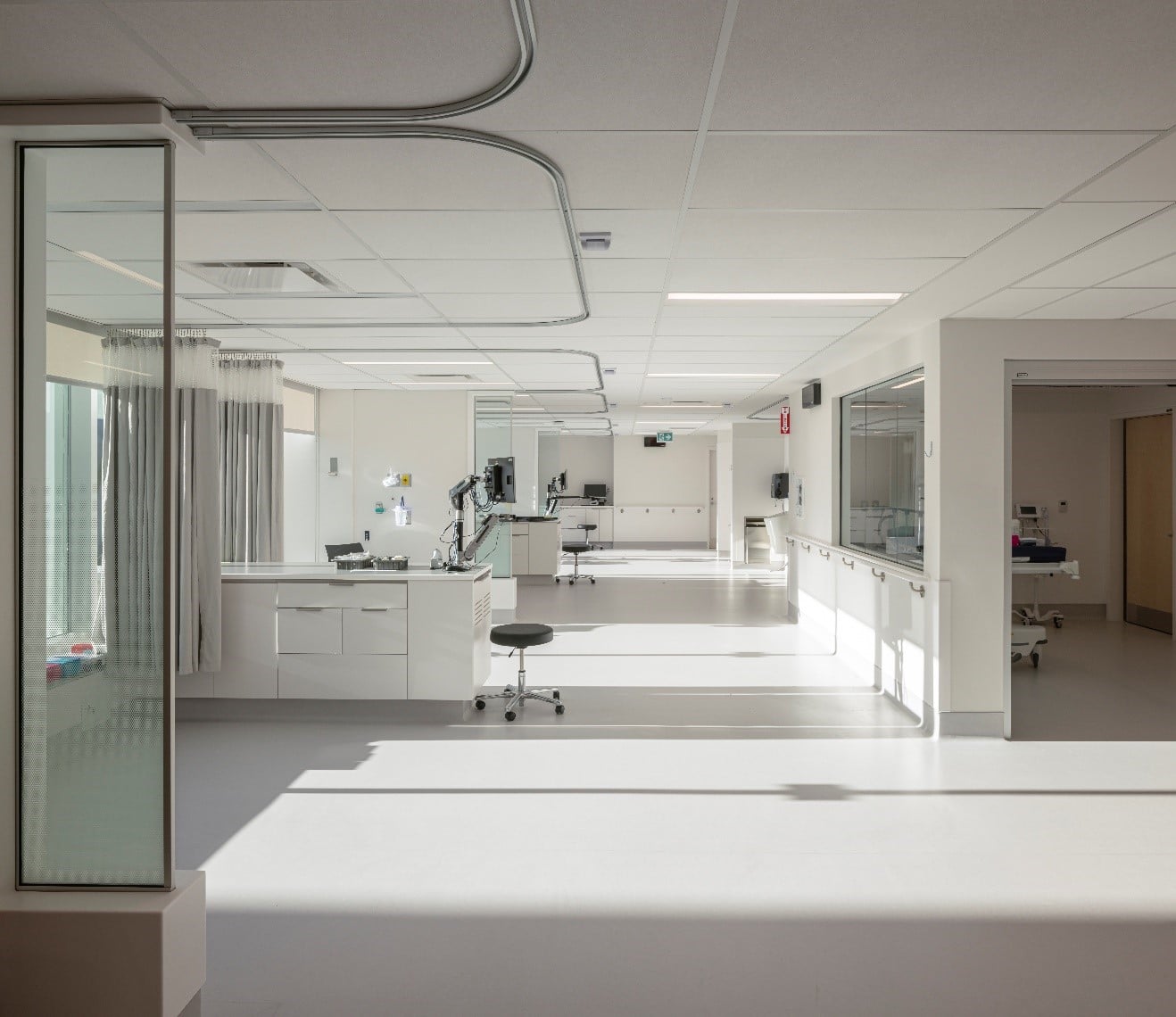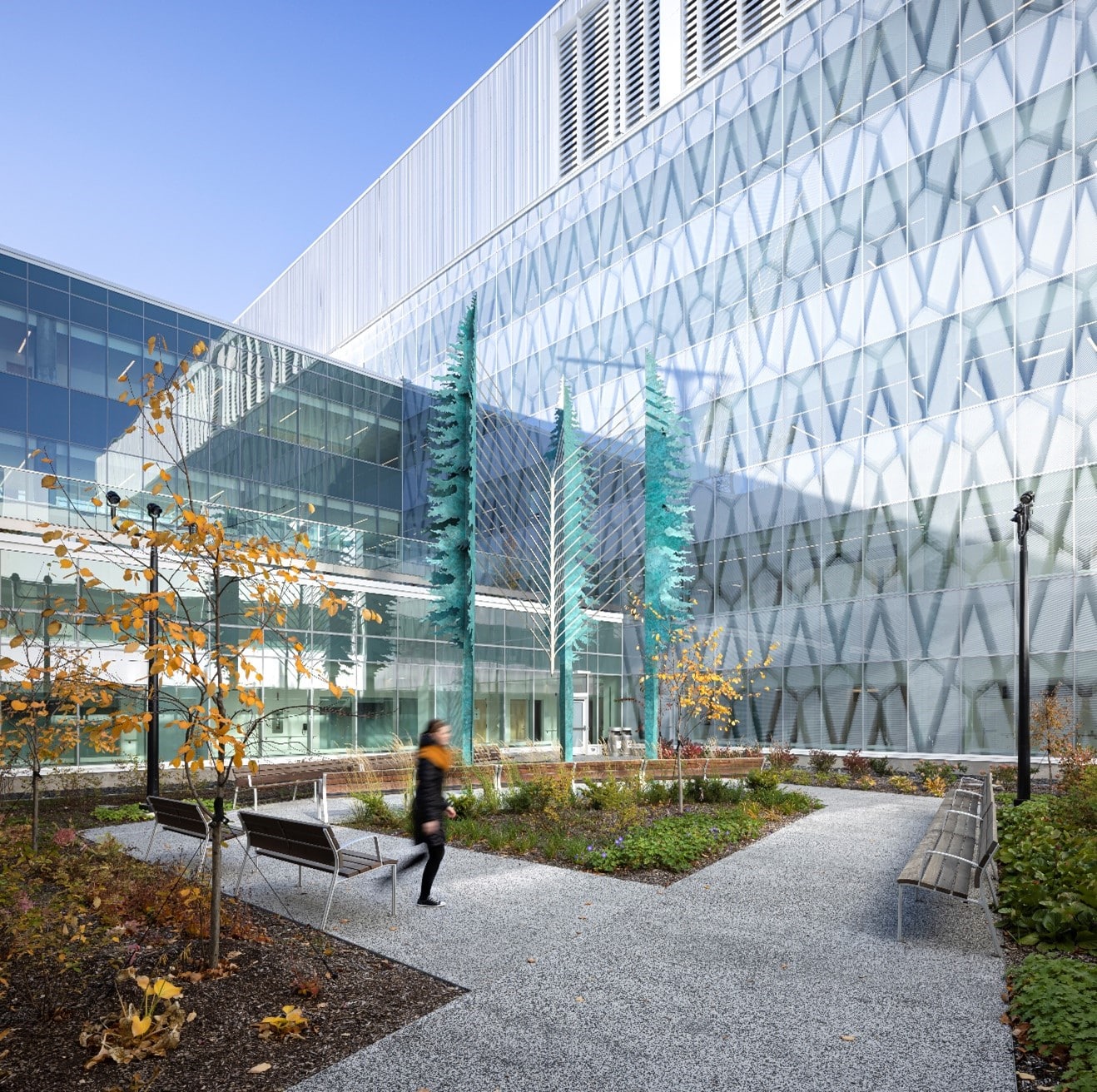Treatment, care and healing through environmental design
Client
CHU de QuébecYear
2023Collaboration
Groupe A / DMG / Lemay / Jodoin Lamarre Pratte architectes / NFOE / GLCRM-
Discipline(s)
Architecture
Landscape Architecture
Interior Design
Treatment, care and healing through environmental design
Lemay designed the new integrated cancer centre as part of phase 1 of our involvement in the Nouveau complexe hospitalier (NCH) du CHU de Québec megaproject. Phase 1 is also set to include the design of the research centre, and phase 2 will involve expanding the hospital and renovating the already existing wings.
The centre was designed to be a serene and calming environment for patients, caregivers and attendants. Conceived by a transdisciplinary team of architects, landscape architects and interior designers, the centre’s soft atmosphere is assisted by natural light pouring in from abundant fenestration, open views onto the complex’s green inner courtyard, high ceilings, and natural finishes.
Spatial orientation of hospital environments can impact stress levels in patients, so emphasis was placed on wayfinding strategies and the graphic design of signage in corridors. Augmented with varying types of wall, floor and ceiling finishes, these features create clear visual pathways for patients and their families as they navigate the complex, while 15 distinct art installations serving as striking visual landmarks which aid in additional wayfinding.
Framed by the centre’s corridors and treatment rooms, the facilities’ green inner courtyard adds a sense of connection between the interior and the outside world. Equipped with spacious rest areas for reflection and relaxation among plants and trees, it takes the visitor beyond the hospital environment and into a serene space. In line with applying Net PositiveTM strategies for a more sustainable project, more greenery can be found on the complex’s roof, the idea being that it would be more aesthetically pleasing than simply using a standard roofing membrane, on top of contributing to heat island reduction.
With a design centred on the human experience, the CHU de Québec is a place of light, beauty and adapted workspaces that encircle the natural courtyard in its middle. In keeping users and their context top of mind all throughout its realization, the project reveals how architecture can help create a healing environment with positive impacts on life and care.
Take the opportunity to see the design review, in French, of the Centre hospitalier universitaire de Québec presented last year by Raynald with Nadine Chartouni and Mylène Carreau.


